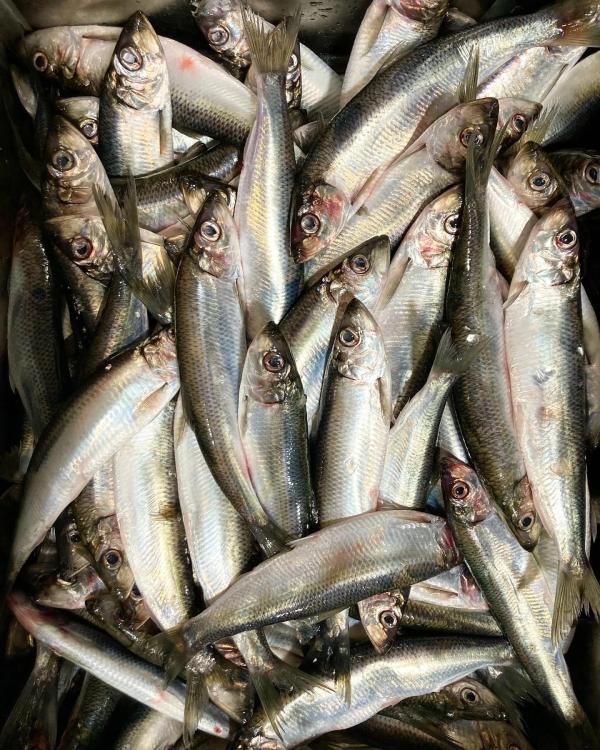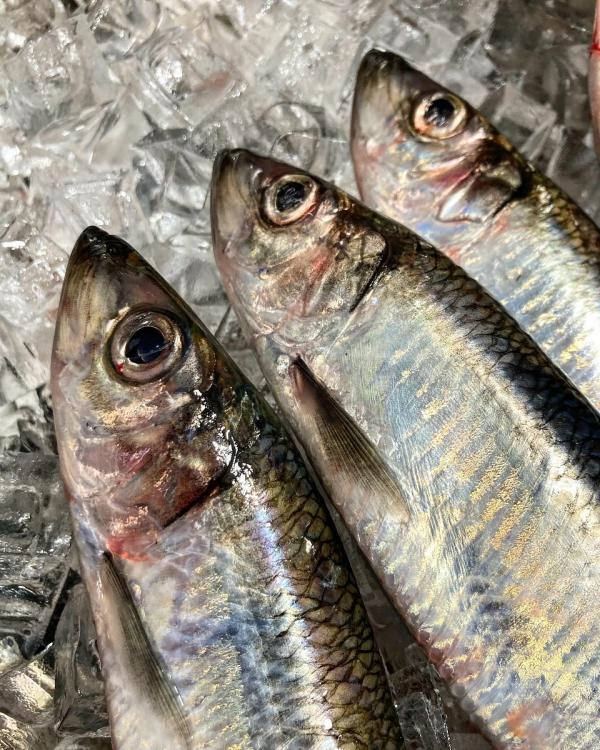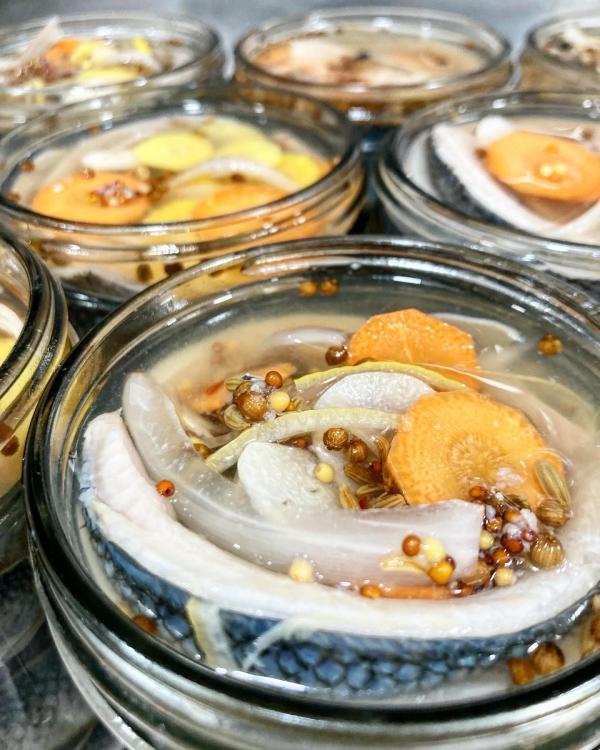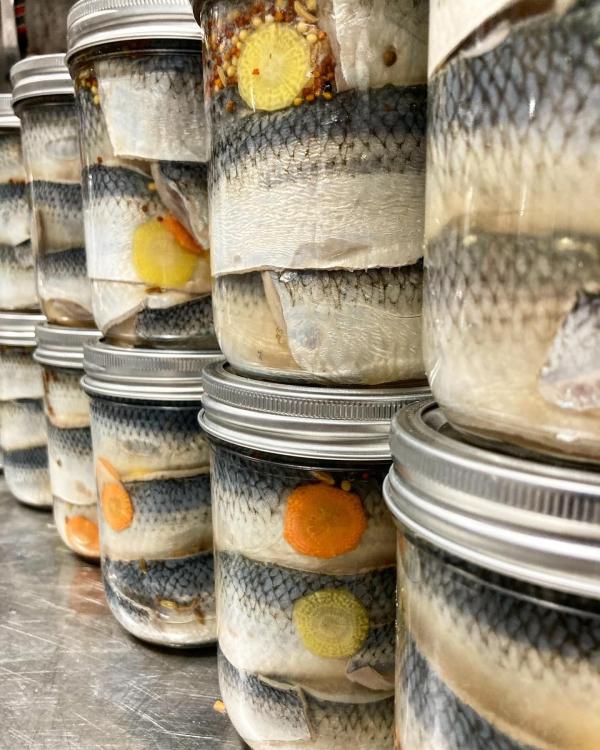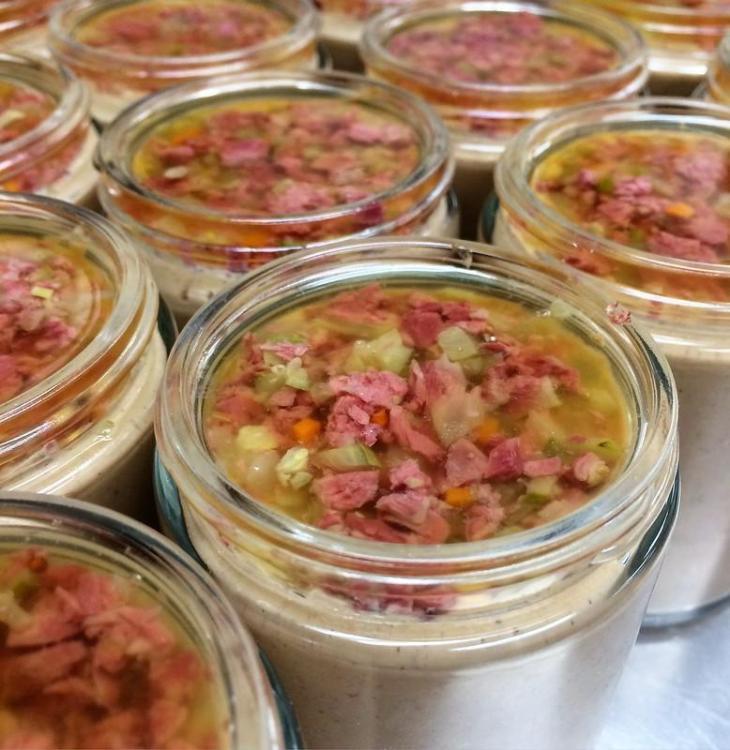-
Posts
270 -
Joined
-
Last visited
-

What Are You Preserving, and How Are You Doing It? (2016–)
Baron d'Apcher replied to a topic in Cooking
Fish are filleted and brined in a 10% salt brine for 3 hrs. Rinsed in cold water and cold pickled in 3% salt, 3% cane sugar brine (90% white wine vinegar, 10% white wine), spices and some veg. The skin peels off easily. -

What Are You Preserving, and How Are You Doing It? (2016–)
Baron d'Apcher replied to a topic in Cooking
Peel off the skin and enjoy on toast, with warm potatoes or however you enjoy pickled fish. Making fish sauce with all the carcasses. -

What Are You Preserving, and How Are You Doing It? (2016–)
Baron d'Apcher replied to a topic in Cooking
Preserving the harbinger of the cusp of late winter and spring. Pickled Long Island Sound herring courtesy Fresh Fish Crew. -
It is what Americans call the Denver steak. Part of the chuck roll.
-
Could be the start of white bloom (penicillin nalgiovenes) which is perfectly fine. Use metric measurements by weight in the future. Far more reliable. Consider beef middles instead of hog casings and make them shorter. Soak the casings in Mold 600 and you will get a thick white bloom.
- 1 reply
-
- 4
-

-
Misrepresenting the product is a lengthy way to say fraud. However, a bone-in ribeye from a commodity steer for 1 person is a huge amount of meat. 2-3lbs raw. What size is the ribeye described as? If the restaurant is buying 109 ribeye's, it is entirely possible that they are cutting in between the bones to get more portions and the bones are from the chine, which run in between the ribs. For what it is worth, I always remove chine remnants from bone-in ribeye's. They are an unpleasant choking hazard.
-
That looks like presskopf which is sort of a headcheese-sausage hybrid that is cooked in a large diameter casing. The parts of the head are brined, diced & ground, stuffed into a casing, smoked and poached.
-
Baron d'Apcher changed their profile photo
-
Anything "wurst" is a sausage and there are quite a few varieties of Bauer. Bauerwurst is a coarse ground sausage, smaller than Bauernwurst, which is smoked pork & beef but I'm confident there are fluctuations by region, town, personality and temperament. Bauernleberwurst is invariably put in a casing raw and not much different than liverwurst, except that liverwurst has more liver and is generally eaten cold. Headcheese qualifies as a terrine. The parts of the head are cooked first, diced up and then put in a mold with some very gelatinous juices which makes it nice and firm. Scrapple is also a sort of terrine. Cooked parts of the head ground up with raw liver and then the paste is cooked with buckwheat or cornmeal until thick and left to cool in a mold.
-
Scour Ebay, tag sales and antique stores. Most of the shaped molds just aren't made that much anymore.
-
Correct. To wit, terrines involve layers or vegetables or fish and more commonly braised beef shanks, chicken or ham (Jambon Persillé).
-
For what its worth, the aforementioned chicken liver pâté is not so much a traditional pâté since the mixture is cooked, processed (finely mixed) and then put in a container whereas pâtés are typically cooked in a mold or vessel from raw. That doesn't diminish the gustatory quality at all. Chicken liver parfait however are cooked from raw in a jar or mold. A preparation that is cooked and then put in a mold or whatnot is generally called a terrine To the French charcuterie purists, chicken liver pâté is commonly referred to as a "farce à gratin" which is either served on its own and billed as a "mousse" or incorporated into other forcemeats (country style pâté) as a binder. I think of a bonafide pâté as a forcemeat varying in coarseness that is generally cooked in a mold, like the venerable "Country pâté". "Pâté Grand-mère" (grandmother) is a thriftier version characterized by a higher amount of livers and stale bread. My chicken liver spread consists of chicken livers marinated in gin, onions, button mushrooms, chicken fat, honey, sherry vinegar and spices. I fill jars and then cover them chopped up pickles and confit gizzards (or tomatoes in the summer) and then a layer of aspic.
-
Gastronomy is something like the distilled delineation of all elements that provide the highest standard of nourishment. I'd propose "satisfaction" as it pertains to the ritual of eating. 19th Century gastronome Grimod de la Reynière documents the choicest ingredients by season and location in his expansive and infinitely charming "Almanach des Gourmands", followed by Brillat-Savarin's epicurean treatise on gustatory aphorisms. Both are founding experts in the matter.
-
Poach the foie gras ahead of time and chill. American foie gras is much fattier than the French counterparts and are prone to releasing far too much fat. Buy "B" lobes as they are smaller, and slightly cheaper, than the "A" lobes which are absurdly massive and look like what I imagine David Crosby's liver to be.
-
Natural casings might help firm up the product as it will shrink. Craft Butcher's Pantry is a reliable source for natural casings of all sorts, shapes and sizes.
-
Consider cutting the shank and simmering with beans until both are tender, like cassoulet. For Swedish Christmas I deboned 2 shoulders, wrapped them in caul fat* nice & snug with herbs and braised until tender with root veg and chicken (or lamb) stock fortified with roasted bones. *Wrap the shoulder tightly in heavy-duty tin foil like a Tootsie pop and chill in the freezer until firm, easier to wrap. Pic is everything raw. The shoulders and veg were browned in bacon fat and braised uncovered @250F, flipped every 1/2 hour until tender and the strained sauce was finished with a splash of Sherry vinegar, dried cranberries and chestnuts.






